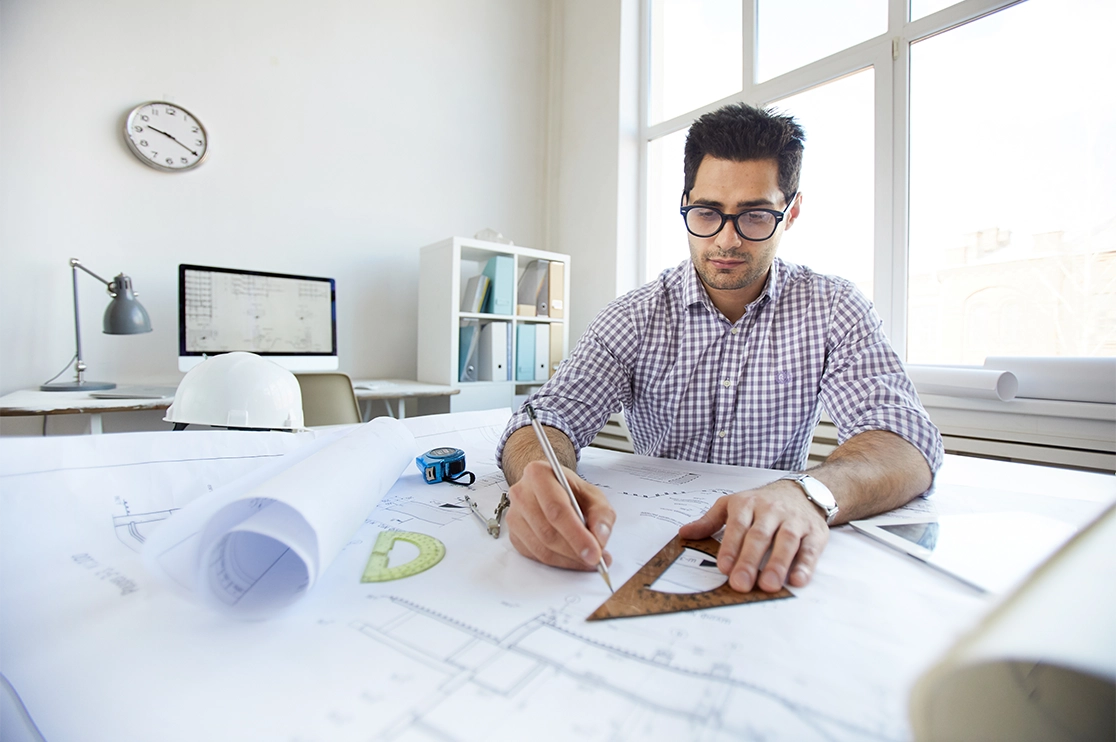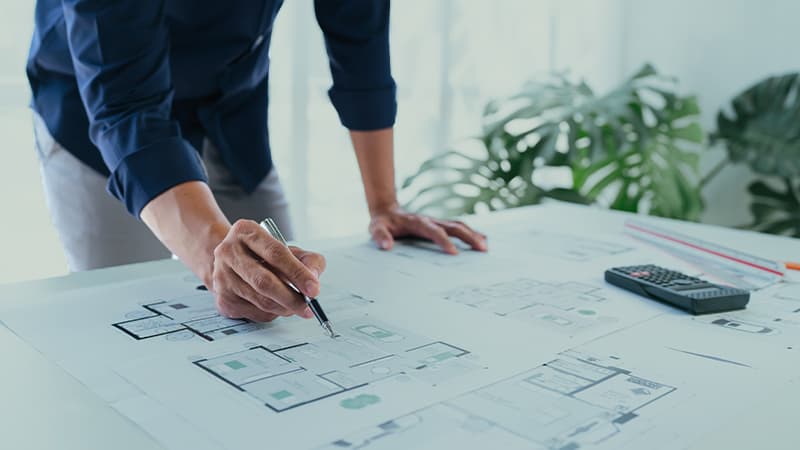The Function of Sustainability and Innovation in Modern Architect Practices
Sustainability and innovation are reshaping modern-day style in methods you could not expect. By embracing environment-friendly materials and clever developments, engineers are not just creating structures; they're crafting environments that enhance our quality of life.
The Significance of Sustainable Style
Sustainable architecture is necessary not just for the environment but also for boosting our lifestyle. When you accept sustainable design, you're not just decreasing your carbon impact; you're creating areas that promote health and health. Imagine residing in a home that harnesses natural light, enhances air quality, and lowers energy costs. You'll really feel a lot more connected and comfy to nature.
In addition, lasting architecture usually leads to stronger areas. When buildings are made with green methods, they can influence others to do the same, fostering a society of sustainability. You'll discover raised residential property worths and a greater sense of pride in your environments.
Lastly, by prioritizing sustainability, you're buying the future. You're making certain that future generations delight in a much healthier planet and vibrant neighborhoods. When you consider your next task, think concerning just how sustainable style can elevate your life and those around you.
Innovative Materials Transforming Building Practices
As you discover innovative materials in architecture, you'll find that eco-friendly building and construction materials are reshaping how we think regarding sustainability. Recycled material technologies are offering brand-new life to waste, while wise product modern technologies enhance building performance. These innovations not just advertise eco-friendliness but additionally press the boundaries of layout.
Naturally Degradable Construction Products
While traditional construction materials usually add to ecological degradation, naturally degradable construction products are emerging as a feasible alternative that changes structure techniques. You can discover alternatives like bamboo, hempcrete, and mycelium, which not just reduce waste however additionally advertise sustainability. These products break down naturally at the end of their lifecycle, decreasing land fill payments. By incorporating naturally degradable alternatives into your layouts, you're not simply enhancing visual charm; you're also making a positive influence on the earth. Plus, they often require much less energy to produce, even more decreasing your task's carbon impact. As you adapt to these cutting-edge products, you'll discover that they supply resilience and convenience, allowing you to develop frameworks that align with contemporary worths of sustainability and responsibility.
Recycled Content Innovations
In the last few years, cutting-edge products with high recycled content have actually changed building methods, offering architects amazing new options - Architect. You can currently include materials like recycled steel, which not only lowers waste yet additionally boasts impressive toughness. Recycled glass is one more amazing option, offering visual allure while minimizing ecological impact

Smart Product Technologies
Smart product innovations are improving the way you consider developing techniques, providing vibrant services that adjust to altering conditions. These cutting-edge products, such as self-healing concrete and thermochromic glass, improve structure efficiency and sustainability. Think of frameworks that can change to temperature level modifications or fix themselves when harmed-- these improvements are no much longer just principles. By incorporating clever materials, you can produce energy-efficient styles that react to their environment, reducing overall energy intake. The ability to adapt and check in real-time streamlines upkeep and prolongs the lifespan of buildings. As you accept these modern technologies, you're not simply innovating; you're adding to an extra sustainable future in architecture, merging capability with ecological duty.
The Combination of Smart Technologies in Design
As technology advances, incorporating wise solutions right into building design comes to be essential for developing lasting and effective spaces. You can include wise technologies like constructing administration systems, which optimize power use and boost passenger comfort. Sensing units can keep track of ecological problems, adjusting lights and temperature instantly based on real-time data. This versatility not only enhances user experience yet likewise decreases power usage.
Incorporating Web of Points (IoT) devices enables for smooth communication among different structure systems, enabling you to make data-driven decisions that boost functionality. Smart materials that respond to ecological adjustments can even more boost your design, offering vibrant remedies to ever-changing problems.
Energy Effectiveness and Renewable Power Solutions
While many designers focus on looks, focusing on power performance and renewable energy options is essential for sustainable style. You can begin by including passive solar style, which maximizes all-natural light and heat, minimizing dependence on fabricated lights and heating systems. Use high-performance insulation and energy-efficient windows to lessen power loss.
Do not neglect regarding sustainable power systems-- install photovoltaic panels or wind generators to create tidy power on-site. You can likewise think about integrating geothermal heating and cooling systems for a more sustainable temperature level law.
By picking energy-efficient devices and illumination, you'll not only reduce energy consumption yet additionally reduced operational costs for building occupants.
Including these concepts into your designs not just profits the atmosphere however also enhances the structure's allure and worth. Eventually, your commitment to energy performance and sustainable energy will establish your jobs apart in an affordable market.
Water Conservation Methods in Modern Design
Incorporating water conservation approaches right into modern architecture is essential for developing lasting buildings that minimize ecological effect. You can achieve this by incorporating rainwater harvesting systems, which accumulate and keep rain for watering and non-potable uses. Applying low-flow components and smart watering systems also lowers water usage, guaranteeing reliable usage throughout the structure.
Think about making use of drought-resistant landscape design, which requires much less water and promotes biodiversity. Integrating permeable paving products enables rain to infiltrate the ground, lowering overflow and recharging groundwater products.
Furthermore, mounting greywater recycling systems can repurpose water from sinks and showers for toilet flushing or irrigation, additional preserving resources.
The Impact of Biophilic Style on Well-Being
Biophilic design brings nature inside your home, and you'll see its positive impacts on your wellness and joy. By enhancing indoor air high quality pop over here and linking you with all-natural elements, these areas can change your everyday experience. Allow's discover just how integrating these functions can improve your total health.
Nature's Impact on Wellness
When you incorporate components of nature into your environments, it can considerably enhance your physical and mental wellness. Biophilic style, which stresses natural light, plants, and natural materials, cultivates a sense of link to the outdoors. Accepting biophilic layout is a step towards a healthier way of living.
Enhancing Indoor Air High Quality
While many individuals focus on aesthetics and performance in design, improving interior air quality plays an important duty in your overall wellness. Poor air quality can cause wellness issues like frustrations, fatigue, and breathing troubles. By incorporating biophilic style components, you can improve air high quality normally. Plants, for instance, not only enhance your room but also filter toxic substances and raise oxygen levels. Utilizing products with reduced volatile organic substances (VOCs) better adds to a healthier interior setting. Additionally, making the most of all-natural air flow aids reduce indoor toxins. Prioritizing these elements in your layout will not just boost your area however also promote a feeling of calm and well-being. Eventually, a focus on air top quality is vital for a healthy and balanced and sustainable living environment.
Connection With Natural Elements
When you get in touch with natural environments in your space, you not only boost its visual appeal but additionally substantially improve your well-being. Biophilic design urges you to integrate features like plants, all-natural light, and natural materials. These components produce a calming atmosphere, lowering anxiety and stress and anxiety. Research reveals that being around nature can enhance your mood and cognitive feature, assisting you feel extra focused and productive. You might see much better air quality and boosted comfort when you welcome the outdoors inside. Straightforward modifications, like adding a living wall or huge windows, can greatly influence your experience (Architect). Ultimately, incorporating nature right into your environment leads you to a much healthier, happier way of living, promoting a much deeper connection to the globe around you.
Future Trends in Lasting Building Practices
As the globe faces pressing environmental difficulties, engineers are increasingly embracing ingenious techniques to sustainability that redefine how we design and develop. You'll see a rise in biophilic layout, incorporating nature into urban spaces to improve wellness and lower power intake. Smart innovations, like AI and IoT, are simplifying power management in buildings, enhancing resource use, and lessening waste.
Additionally, modular building and construction is gaining traction, enabling for quicker, a lot more article source effective building processes while decreasing environmental impact. Using sustainable products, such as redeemed timber and recycled metals, is ending up being common method. As you check out these patterns, expect a change towards round design, emphasizing the lifecycle of materials and advertising reuse and recycling.
These forward-thinking methods not only address ecological concerns yet additionally produce healthier, more resistant areas. By staying notified about these fads, you can assist shape a lasting future in design.
Often Asked Questions
Just How Can Sustainability Affect Job Spending Plans and expenses?
Sustainability can considerably influence job prices and budget plans. You may discover that initial financial investments in green products or innovations bring about lasting financial savings via energy efficiency, reduced waste, and potential government incentives, inevitably balancing the general expenditures.
What Qualifications Exist for Lasting Design?
You'll locate a number of certifications for sustainable design, including LEED, BREEAM, and the Living Structure Obstacle. These qualifications assist you show your commitment to sustainability and can improve your task's reputation and attract customers.
How Does Regional Society Influence Sustainable Style?
Neighborhood culture forms lasting design by showing area traditions, materials, and values. You'll discover that incorporating local looks and techniques not just respects heritage but likewise improves the capability and approval of your building projects.
What Role Does Client Education Play in Sustainable Practices?
Client education and learning's crucial for promoting lasting practices. When you inform clients about benefits, costs, and environmental site here impacts, you empower them to make educated decisions, promoting a collective method that improves the job's general sustainability.

How Can Architects Gauge the Success of Sustainability Initiatives?
You can determine the success of sustainability efforts by tracking power consumption, assessing product effectiveness, and celebration feedback from clients. Routine audits and contrasts versus benchmarks will assist you fine-tune your strategies and display improvements efficiently.
By incorporating clever products, you can develop energy-efficient designs that respond to their environment, decreasing general power usage.While several engineers concentrate on visual appeals, prioritizing energy effectiveness and sustainable power options is crucial for lasting layout. Biophilic layout, which stresses all-natural light, plants, and natural products, promotes a feeling of connection to the outdoors. Biophilic style encourages you to incorporate features like plants, natural light, and organic products. As you discover these fads, anticipate a shift toward circular design, stressing the lifecycle of products and advertising reuse and recycling.